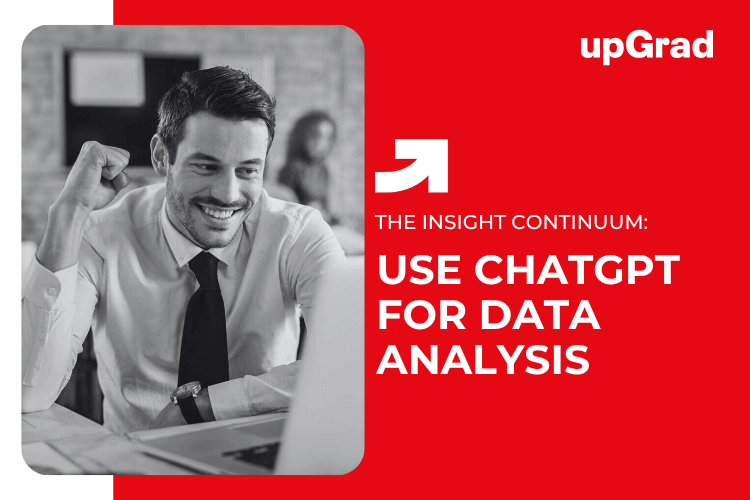ChatGPT has gained immense popularity for content creation and answering questions. Its advanced natural language abilities have immense potential for advanced data analysis. This artificial intelligence tool can help you gain powerful insights from advanced data analysis of Chat GPT with complex data sets and a simple conversational interface. This article will discuss how Chat GPT can improve your data analysis game. Whether you are an aspiring data scientist or want to make sense of numbers for business decisions, leveraging Chat GPT can give you an edge.
Getting Started with Data Analysis in Chat GPT
To tap into Chat GPT’s advanced data analysis capabilities, the first step is to prompt it correctly. Here are some tips:
- Clearly state you need help with data analysis to activate the suitable model
- Explain the data set, including the number of rows/columns, field names, data types, etc.
- Ask specific questions – don’t just dump data and expert insights
- Frame requests conversationally, e.g., “Can you help me understand trends in this sales data from the last 5 years?”
Additionally, when providing data samples to Chat GPT, use a tabular format with headers for each column. This makes it easier for the AI to parse and analyze.
Critical Data Analysis Tasks where Chat GPT Shines
Once you have set up the right prompt, there are several high-value data analysis tasks where Chat GPT can add value:
Data Processing
- Cleaning messy data: Fix missing values, duplicates, and inconsistencies in format/values
- Merging multiple data sources: Combine Excel sheets CSVs into unified tables
- Converting data types: Switch from text to numeric, categorical, etc
- Filtering datasets: Extract subsets based on conditions
Exploratory Data Analysis
- Statistical summaries: Mean, median, correlation, distribution, etc
- Data visualizations: Plots, charts, and graphs to spotlight trend
- Segment comparisons: Differences across customer, product, and timeline groups
- Anomaly detection: Call out unexpected patterns needing investigation
Predictions and Forecasting
- Regression modeling: Predict numeric outcomes like sales, prices
- Classification models: Categorize data points into buckets
- Time series forecasting: Projectfuture values based on histories
- Recommendation engines: Suggest products based on correlations
The key is to frame what insights you need from the data instead of just sharing data and asking Chat GPT to perform advanced data analysis. The more business context you provide, the better the quality of insights.
Limitations to Consider for Realistic Outlooks
Before you get too excited about tapping Chat GPT for all your data needs, here are some limitations:
- Results are only as good as the data quality and prompts. Garbage in, garbage out still applies.
- Advanced statistical methods, such as causal inferences and multivariate modeling, have some limitations. External tools like chat GPT alternatives will be better for those.
- For sensitive data like healthcare, financials, etc., evaluate ethical risks before relying unthinkingly on AI.
- Results will continue improving as the models evolve, but occasional inaccuracies are expected.
Keep expectations realistic, double-check outputs, and use other tools too. When used wisely, ChatGPT boosts efficiency significantly.
Next Steps to Apply Chat GPT for Data Analysis
Ready to harness this new AI superpower for better data insights? Here is a step-by-step plan to get started:
- Learn Chat GPT prompts through examples to frame requests correctly
- Start small with low-risk datasets and questions to build confidence
- Verify outputs manually before relying entirely on Chat GPT
- Combine Chat GPT with traditional analytics tools you use for the best results
- Monitor model updates from Anthropic to improve quality over time
- Follow ethics guidelines from Unbiased AI to avoid misuse
Conclusion
AI is fast-evolving, so integrating new solutions like Chat GPT alongside existing workflows is critical to accelerating future-proof skills. Chat GPT provides an easy entry point for experimenting with this powerful new technology. Learn, experiment, and execute pilots before scaling usage.
With responsible adoption, you can leverage this new AI power to uncover game-changing trends and opportunities for your business. Harness the future of data analysis today with Chat GPT!
FAQs
1. What kind of data analysis can Chat GPT do?
Chat GPT can help with a wide range of data tasks, such as cleaning messy data, spotting trends through visualizations, making predictions with modeling, anomaly detection, and more. It excels at exploratory and descriptive analytics.
2. Does Chat GPT replace traditional data analytics tools?
No, Chat GPT complements other BI tools. It has some limitations with advanced statistics, so depending on the use case, you must use it along with Excel, SQL, Python, etc.
3. How accurate is Chat GPT for data analysis?
Accuracy can be high for more straightforward tasks, but outputs must be validated manually. Accuracy improves with precise, prompt framing and good-quality data. Some advanced tasks may have lower accuracy.
4. Can Chat GPT work with sensitive data like healthcare records?
There are open ethical concerns about relying unthinkingly on AI for sensitive data. Evaluate risks vs benefits first, considering privacy regulations.
5. What format should I provide data to Chat GPT?
Tabulated data with column headers works best. Avoid photos of data tables. Alongside the data, provide context on what insights you need.
6. Does Chat GPT generate insights independently, or must I guide it?
The prompts you provide guide what analysis Chat GPT does. Expect great insights only from dumping data with directives. Frame specific questions for best results.









